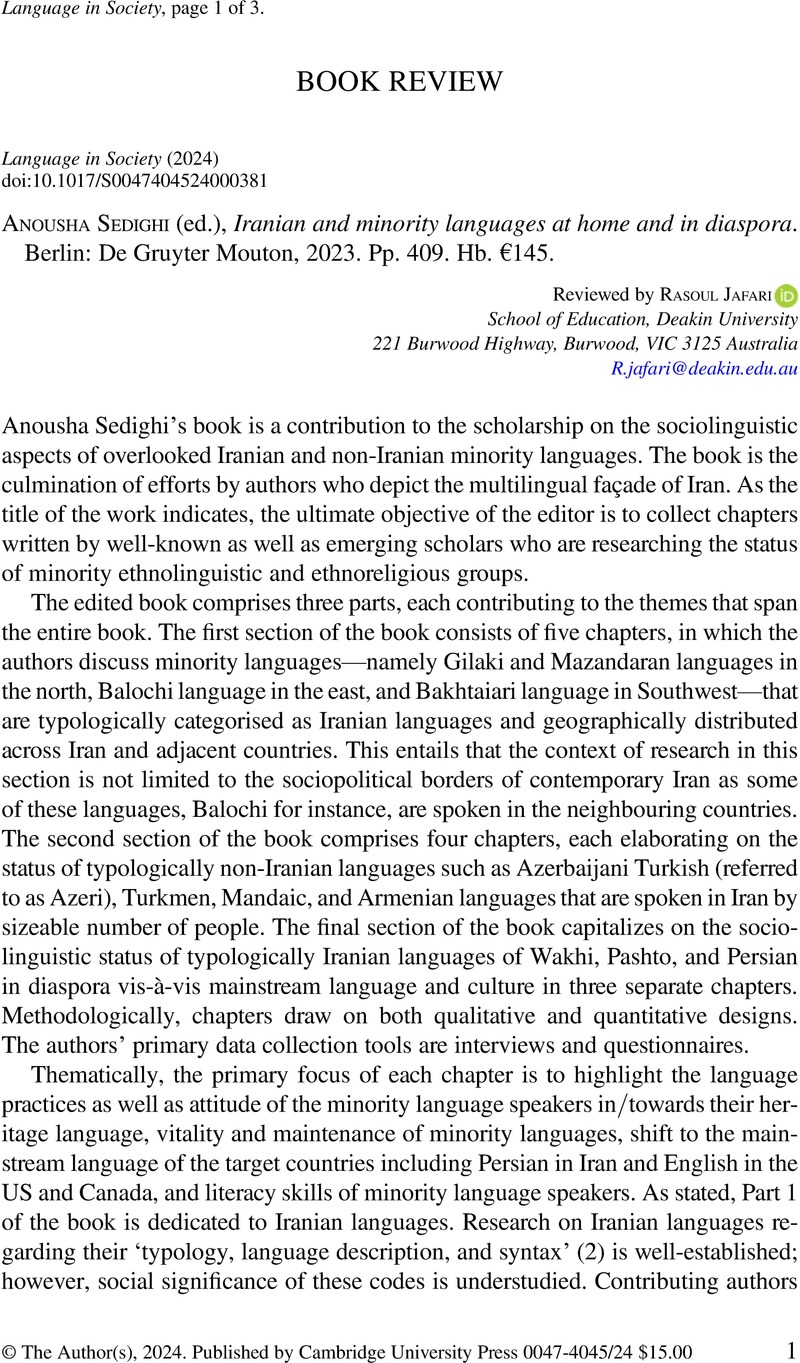No CrossRef data available.
Article contents
Anousha Sedighi (ed.), Iranian and minority languages at home and in diaspora. Berlin: De Gruyter Mouton, 2023. Pp. 409. Hb. €145.
Review products
Anousha Sedighi (ed.), Iranian and minority languages at home and in diaspora. Berlin: De Gruyter Mouton, 2023. Pp. 409. Hb. €145.
Published online by Cambridge University Press: 17 May 2024
Abstract
An abstract is not available for this content so a preview has been provided. Please use the Get access link above for information on how to access this content.

- Type
- Review
- Information
- Copyright
- Copyright © The Author(s), 2024. Published by Cambridge University Press



